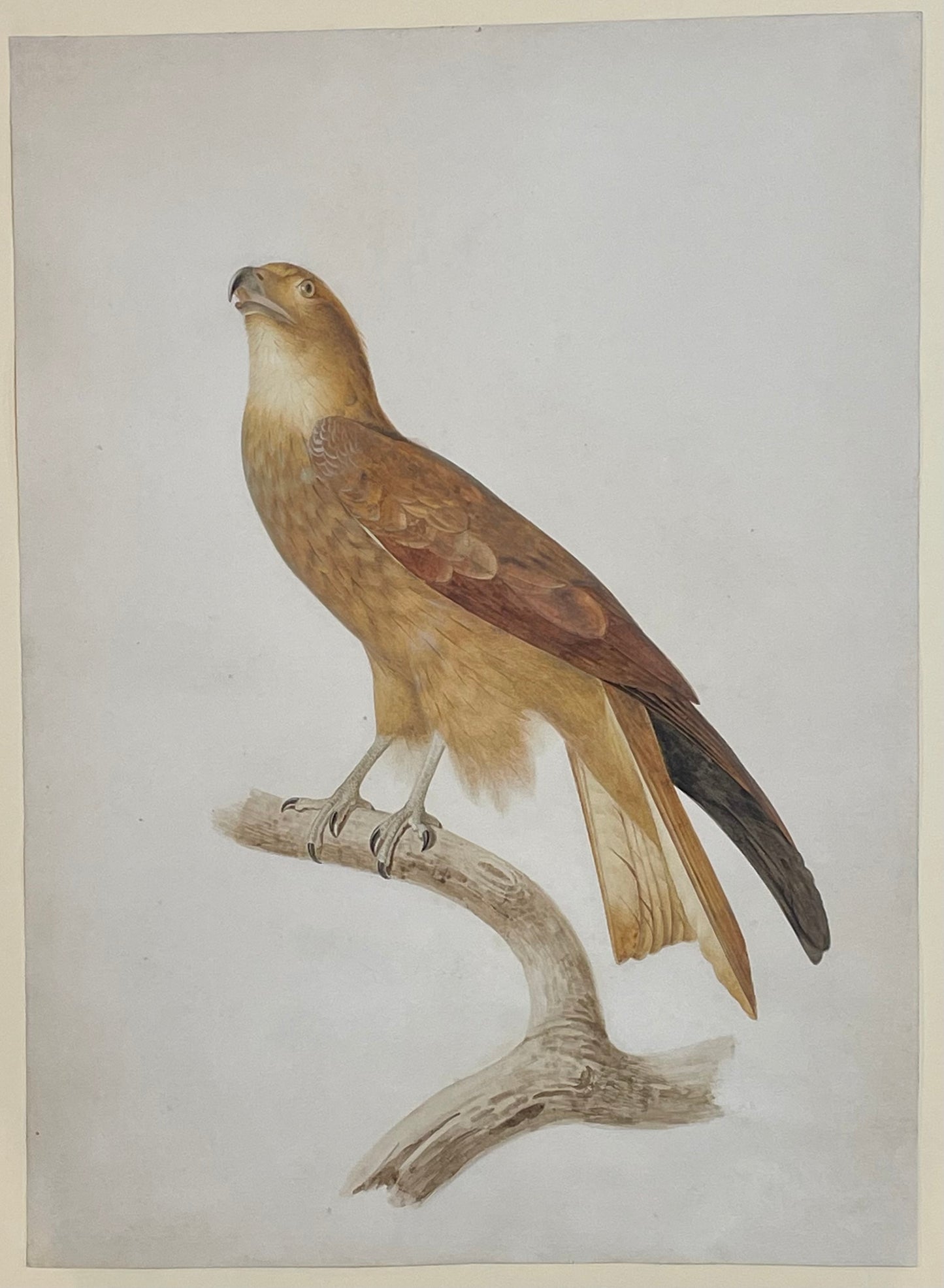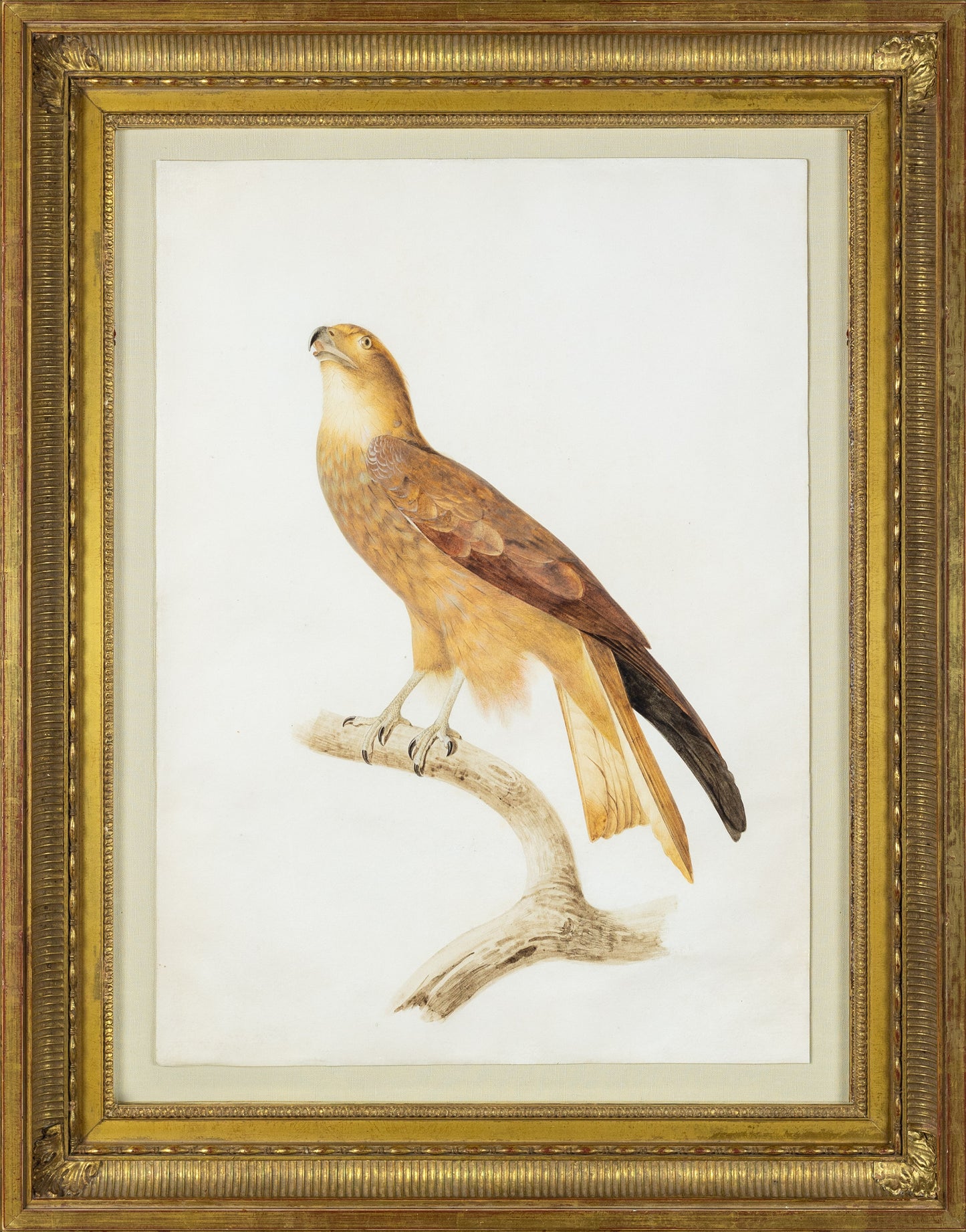from: Jacques Barraband
Jacques Barraband (French, 1767–1809). African Tawny Eagle (Aquila rapax). Early 19th century.
Jacques Barraband (French, 1767–1809). African Tawny Eagle (Aquila rapax). Early 19th century.
Couldn't load pickup availability
Jacques Barraband (French, 1767–1809)
African Tawny Eagle (Aquila rapax)
France, early 19th century
Gouache and watercolor on paper
Sheet Size: 39 cm x 53.5 cm
A fierce and commanding raptor, its image resonates with the martial aspirations of Napoleon, whose imperial emblem—the eagle—was drawn from birds such as this.
Provenance:
This watercolor was a part of the extensive ornithological study commissioned by Napoleon Bonaparte during the Egyptian Campaign (1798–1801). They were originally intended to illustrate the Système des Oiseaux de l'Égypte et de la Syrie by zoologist Marie-Jules César Lelorme de Savigny (1777–1851), published in 1809. This text was included in Volume I of the monumental Histoire Naturelle de la Description de l’Égypte, which documented the flora and fauna of Egypt as part of Napoleon’s scientific endeavors.
Barraband’s ornithological works were later engraved by Louis Bouquet for publication. His contributions totaled 44 plates of birds for the Description de l'Égypte, demonstrating his unparalleled precision in ornithological illustration. His work was recognized as early as 1804, when he was awarded a gold medal for his contributions to the Description de l'Égypte and Levaillant’s Histoires Naturelles.

Napoleon’s Commission: Barraband’s Raptors of Egypt
Jacques Barraband’s remarkable ornithological watercolors capture the regal presence of Egyptian birds of prey—creatures that, for centuries, have symbolized strength, wisdom, and the vast power of the natural world. These paintings are more than just scientific studies; they are the result of a direct commission by Napoleon Bonaparte himself, created to document the formidable raptors that soared over the landscapes Napoleon sought to conquer and understand.
Napoleon’s Egyptian Campaign & The Imperial Commission
Between 1798 and 1801, Napoleon’s Egyptian Campaign was as much an intellectual conquest as a military one. Determined to establish France as the world’s center of scientific and artistic excellence, Napoleon personally assembled a team of scholars, naturalists, and artists to accompany his expedition. Their mission was to catalog Egypt’s flora, fauna, and cultural antiquities in unprecedented detail, culminating in the monumental Description de l’Égypte.
Among the subjects most admired and studied were Egypt’s great birds of prey—eagles, owls, and vultures—creatures that had long been revered in Egyptian mythology and iconography. Recognizing the significance of these raptors, Napoleon’s court enlisted Jacques Barraband, the foremost bird illustrator of his time, to produce a series of original watercolors depicting Egypt’s avian apex predators. These paintings were created as part of Napoleon’s personal endeavor to document the natural world of Egypt, linking scientific discovery with the grandeur of his imperial vision.
A Testament to Ornithological and Artistic Excellence
This masterful watercolor is an exquisite fusion of art and scientific discovery. Barraband’s delicate hand and masterful application of color render each feather with astonishing precision, reflecting both his unrivaled draftsmanship and Napoleon’s drive to elevate French natural history studies to imperial heights.
With its direct ties to Napoleon’s vision of an enlightened empire—one that celebrated both conquest and discovery—these works stand as historical artifacts of an era that sought to unravel the mysteries of Egypt. Commissioned to document the raptors that ruled Egypt’s skies, these paintings remain a rare and extraordinary acquisition for collectors of ornithology, history, and fine art.




